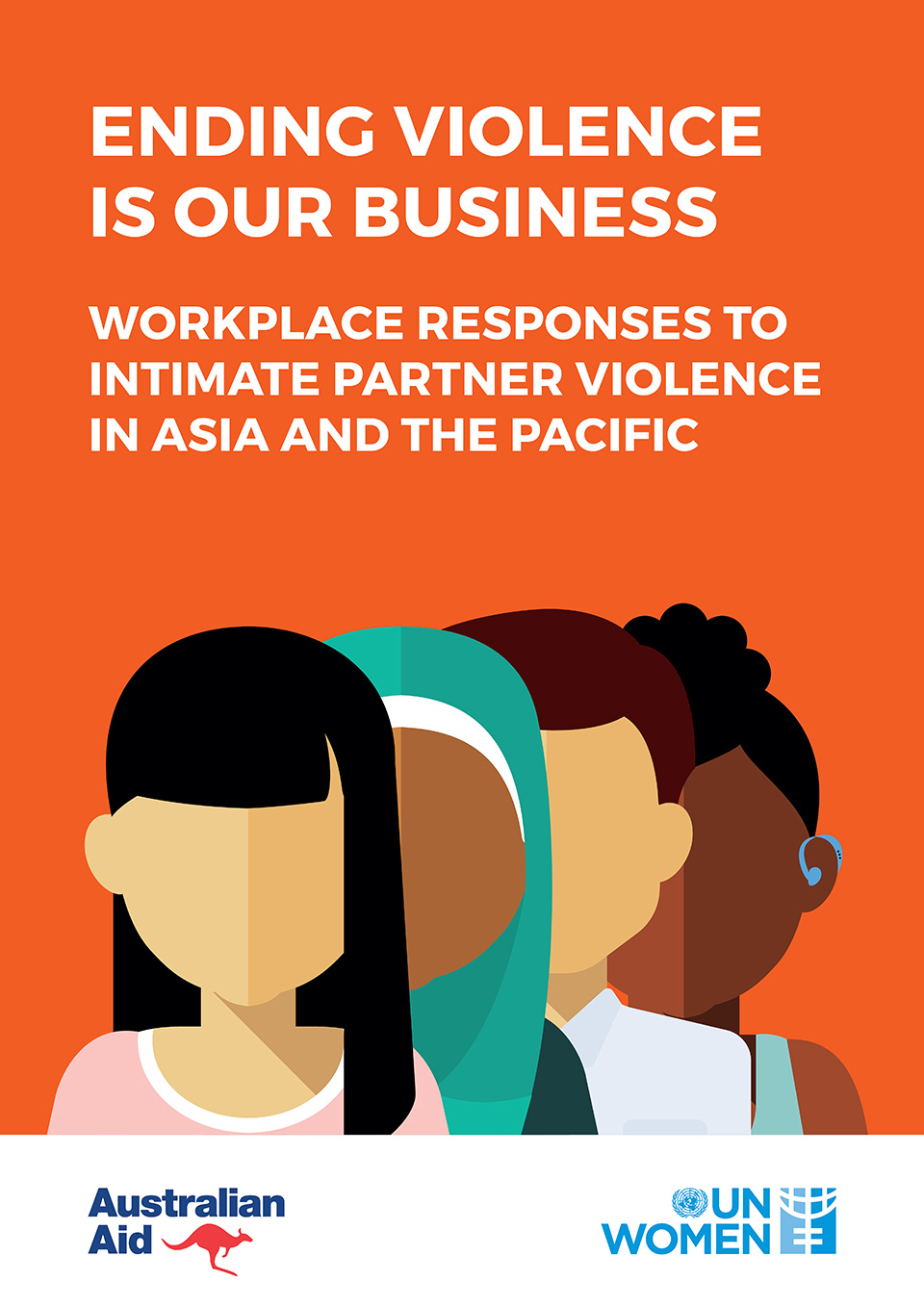
Ending Violence is Our Business: Workplace Responses to Intimate Partner Violence in Asia and the Pacific

This case study collection shares promising practices and lessons learned from organizations that are implementing workplace responses to violence that occurs in intimate relationships. It focuses on intimate partner violence as this form of violence often receives less attention as a workplace issue than sexual harassment. Sexual harassment, intimate partner violence and sexual violence are part of a larger continuum of violence against women and girls, grounded in persistent gender inequality and discrimination, and it is strategic for workplaces to address all forms of violence against women, beyond the forms that occur in the workplace.
This publication features 15 organisations from countries across Asia and the Pacific. It includes diverse sectors: development, resources and mining, sporting, banking, retail and business support. The self-reported measures included here offer reflections about what have been instrumental in effectively responding to intimate partner violence in the workplace across organizations and countries. By profiling promising practices, UN Women invites business leaders to take action to prevent and respond to intimate partner violence through internal and client-facing approaches, products and services. Significant progress could be made if more business leaders and industries committed to ending violence against women in Asia and the Pacific.
These case studies and evidence tell us that effective workplace responses to violence against women requires strong leadership endorsement, supportive governance structures, and a workplace culture that consciously seeks and supports equality and respect. The case studies highlight that having a policy alone is not enough: a demonstrated commitment to the policies, financial and practical support, and a culture that supports employees to use these entitlements is also vital.